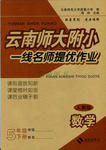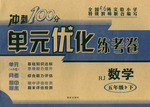��Ŀ����
�Ķ�������ģ���������⣬��ÿ��������A��B��C��D �ĸ�ѡ���У�ѡ�����ѡ�
A boy was walking home from school when he saw a large, tempting apple on one of the branches of an apple tree hanging out over a tall fence. The boy wasn��t much of a fruit-eater, ____ a bar of chocolate if given the choice, ____ , as they say, the forbidden fruit can be tempting. Seeing the apple, the boy wanted it. The more he looked at it, the ____ he felt and the more he wanted that apple.
He stood on tiptoe, ___ as high as he could, but even at his tallest ____ he was unable to touch it. He began to ____ up and down, as high as he could, at the ___ of each jump stretching his arms to get the apple. Still it remained out of ____.
Not giving up, he thought, if only he had something to ____ on. His school bag wouldn��t give enough height and he didn��t want to ____the things inside, like his lunch box, pencil case, and Game boy. Looking ____ he hoped he might find an old box, a rock, or, ____ luck, even a ladder, but it was a tidy neighborhood and there was nothing he could use.
He had tried everything he could think to do. ____ seeing any other choices, he gave up and started to walk ____ . At first he felt angry and disappointed thinking about how hungry he had become from his ____, and how he really wanted that apple. The more he _ __ like this, the more unhappy he became.
____, the boy of our story was a pretty smart guy, even if he couldn��t always get what he wanted. He started to say to himself. This isn��t ____. I don��t have the apple and I��m feeling miserable as well. There��s ____ more I can do to get the apple. That is unchangeable, but we are supposed to be able to ____ our feelings. If that��s the case, what can I do to feel better.
1.A. receiving B. offering C. preferring D. allowing
2.A. so B.. but C. then D. or
3.A. sadder B. angrier C. tastier D. hungrier
4.A. expanding B. swinging C. stretching D. pulling
5.A. length B. strength C. range D. height
6.A. glance B. look C. walk D. jump
7.A. tip B. top C. stage D. level
8.A. reach B. hand C. sight D. hope
9.A. put B. hold C. get D. stand
10.A. take B. shake C. break D. strike
11.A. around B. forward C. down D. up
12.A. for B. on C. with D. of
13.A. After B. Without C. Through D. Upon
14.A. back B. down C. up D. away
15.A. efforts B. beliefs C. wishes D. goals
16.A. imagined B. thought C. tried D. claimed
17.A. Therefore B. Otherwise C. Moreover D. However
18.A. helpful B. cheerful C. harmful D. skillful
19.A. something B. nothing C. everything D. anything
20.A. forget B. express C. change D. remember
 ����ʦ��Сһ����ʦ������ҵϵ�д�
����ʦ��Сһ����ʦ������ҵϵ�д� ���100�ֵ�Ԫ�Ż�������ϵ�д�
���100�ֵ�Ԫ�Ż�������ϵ�д�������ѧУѧ���������ȫУ����ѧ���н��е�һ�Ρ����Ƿ����Ͽ�ʱ�DZʼǣ����ĵ��顣����ΪУ�����ߣ�����Ӣ�ォ��������д��һƪ���Ŀ�����У���ϡ�
��д�����ݡ�
���鷶Χ�Ͷ��� | ȫ�����ѧ������2105�� |
������ | 55%��ѧ���DZʼǣ����ǵ�ѧϰ�ɼ����Ϻ� |
45%��ѧ��û�DZʼǣ������е�����Ϊ���������������ȼDZʼǸ���Ҫ���е���DZʼǵ���֪������֣�����������Ҫ��ʦ�İ����� | |
��Ե������Ŀ��� | ��ʦӦ������ѧ���������ʼǵ����� |
��д��Ҫ��
ֻ��ʹ��5�����ӱ���ȫ�������ݡ�
�����ֱ���
���ӽṹȷ����Ϣ����������ƪ�����ᡣ

